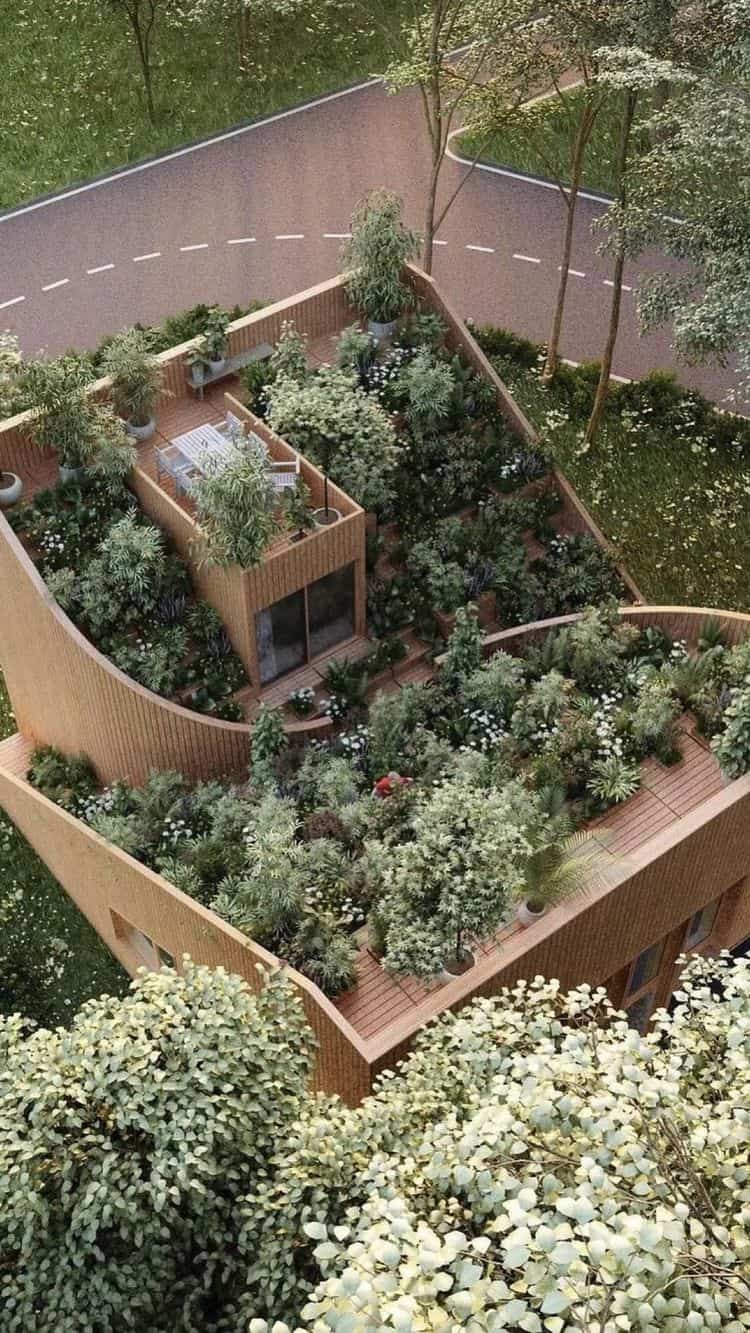Sustainable architecture is the hot spot in modern civil construction projects.
And it couldn’t be different. The civil construction sector is one of the most damaging to the environment, being responsible for the consumption of 75% of all-natural resources on the planet. Other than that, civil construction still generates about 122 tons of waste and debris every day in Brazil alone. In other words, it is high time to start paying this bill.
The light at the end of the tunnel is precisely in the concepts and practices adopted by sustainable architecture. Let’s talk about it?

What is sustainable architecture?
Sustainable architecture is a new way of thinking about architecture, both in terms of the design and functionality of the works, and in the construction process.
The main objective of sustainable architecture is to minimize the high negative impact of buildings on the environment through alternative materials and practices.
Modern man and nature can coexist in harmony. Proof of this is that intelligent housing is capable of saving resources, reusing materials, and being self-sufficient, especially in terms of energy, one of the main factors responsible for environmental degradation.
Advantages of sustainable architecture

Environment friendly
One of the first and main advantages of sustainable architecture, without a doubt, is the care for the environment.
By adopting sustainable construction practices, a project can significantly reduce the use of natural resources and the generation of waste.
Brings health and well-being to residents
Sustainable architecture also ensures a better quality of life and health for residents, as it proposes healthy housing, including greater use of sunlight and ventilation, for example.
Long term financial savings
In the long term, sustainable architecture also represents a financial gain for residents. That’s because a self-sufficient house reduces or even eliminates expenses and conventional bills, such as water, electricity, and gas.
Can you imagine living without having to pay bills?
Modern and functional design
Contrary to what many people might think, sustainable architecture proposes very modern and futuristic constructions. The use of intelligent materials, such as glass with solar control film, for example, guarantees bold constructions.

Cost of work x sustainable architecture
Unfortunately, sustainable architecture still has to deal with the barrier of lack of information. This causes several myths to arise around this new construction proposal, especially concerning the cost of the work. Sustainable architecture is still more expensive than conventional work and can cost up to 30% more.
However, the costs pay for themselves over time. Not to mention that sustainable architecture requires less maintenance, which also impacts long-term costs.
Use of recyclable materials and renewable sources
In sustainable architecture, the priority is recyclable materials and those coming from renewable sources. A good example is the use of ecological tiles made from recyclable materials, such as Tetrapark packaging and PET bottles. The use of wood from reforestation is also common in sustainable construction. It can be used from construction, to create shapes, to decoration and finishing, in furniture, floors, and ceilings.
On the other hand, materials with a high environmental impact, such as marble and fine woods, for example, have no place in sustainable architecture.

